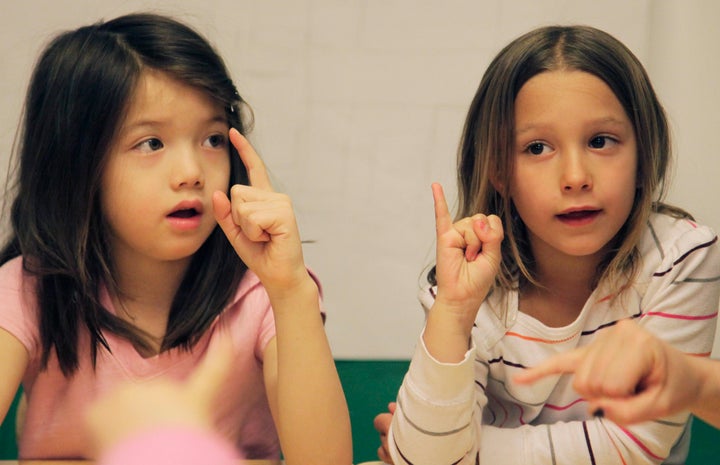
With those long black eyelashes and huge blue-gray eyes, she looked at me quizzically at the airport.
Do I know you?
Have I met you before?
Your glasses look familiar and my Mom and Dad seem to know you.
I think I know your smell.
I think I know your smile.
But do I know you?
Mara is 15 months old, walking wide, like Charlie Chaplin. She has a pure pink complexion and four tiny white teeth.
I was present at her birth and have visited every six to eight weeks since. Mara and I were both born on the 21st of the month. In her case, it was the summer solstice.
By the time we reach the car outside the airport, my granddaughter is safely strapped in, I have my feeding assignment and we are no longer strangers. We're giggling and doing funny things with our faces. And she remembers the 1-2-3-4-1-2-3-4 rhythmic clapping I always do with her to a count of four. Music connects us.
But since I've seen her six weeks ago, she has learned sign language, which both her parents are studying and practicing with her. They speak the words and sentences while simultaneously making the signs. So much so that within a few days, I learned a few myself! I watch and see for myself how much babies know -- if only they could speak. So while Mara can say Mama and Dada and uses most of the consonants in the alphabet, she mostly babbles and nobody can understand her.
Except she knows what she is saying.
Except she does have language.
She has sign language.
Given her parents' patience, repetition, use of words and American Sign Language (ASL) signs,
she knows how to ask for her blanket by making a fist and rubbing it on her neck. She knows how to say she's hungry by repeatedly pointing to her mouth with her right hand closed. She knows how to ask for "more" by making a fist with each hand and tapping her hands together until someone notices. Since she always wears a hat when she goes outside and associates the two events, she will ask for her hat by tapping her head with one open hand as a way of expressing her wish to go outside.
When she wants a bath (or expects to get one) Mara rubs both hands around her chest and tummy as though lathering up! In the mood for milk, she will use one hand in a milking-the-cow movement. And when she needs a diaper change, she will take one hand and gently slap her thigh or her behind.
That's just the beginning. These are "the essential words". The less essential words/signs Mara responds to now are: dog, fish, shoes, bird, dance, music, apple, baby, cat, hot, flower, telephone, duck, light, fan, frog, lion, jump and more.
When she hears or sees a dog in the neighborhood (of which there are many in Denver), Mara will pant like a dog, letting us know that she knows there's a dog nearby! When she sees a baby, she will put her arms together in a rocking motion. Yes, we will say. Yes, that's right. It's a baby. It's a baby.
If we ask her whether she'd like to dance to music, she will go up and down on her knees to let us know she knows what music is. She's now being taught to "say" (sign) "please" and "thank you".
Sign language is a natural way to help communication in the first year or so of life. In the first of a ten-session class I attended with Mara and her Dad, each and every parent in the room spoke to their interest in this class so that they could communicate better and help with the frustration which occurs for both baby and parents when they cannot understand each other.
It turns out that babies who can sign are known to be less fussy/whiney/crying than babies who cannot communicate. Thus the frustration is enormously relieved for everyone concerned.
The youngest in the class was barely six months old. Mara, at 15 months, was the oldest.
There are now DVDs, classes, and many books feeding the interest of new parents in learning sign language and using it with their babies.
As a psychotherapist in practice for well over 25 years and interested in development, I wonder what took so long for there to be a "movement" to teach and use sign language for our pre-verbal selves. We have known for a long time, thanks to Daniel Stern and other researchers in infant observation, that babies "know stuff". We have known that babies respond. And thanks to neuroscience, we know more than ever that the brain is developing and changing (a la neuro-plasticity) from the moment of birth due to individual predisposition, genetics and environmental stimuli.
Although I work with adults, the early world we each inhabit is marked by various forms of communication, attachment and feelings of being understood. The more coherent these factors are, the more likely our success in our adult development and relationships.
For me personally (and professionally), it is a joy to watch my adult children speak and sign words and sentences to my little granddaughter. Their household, as you can imagine, is both quiet and peaceful as a result.